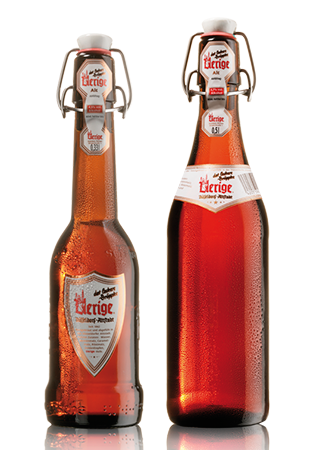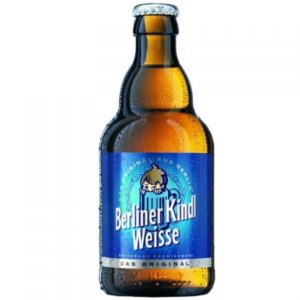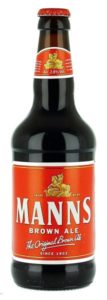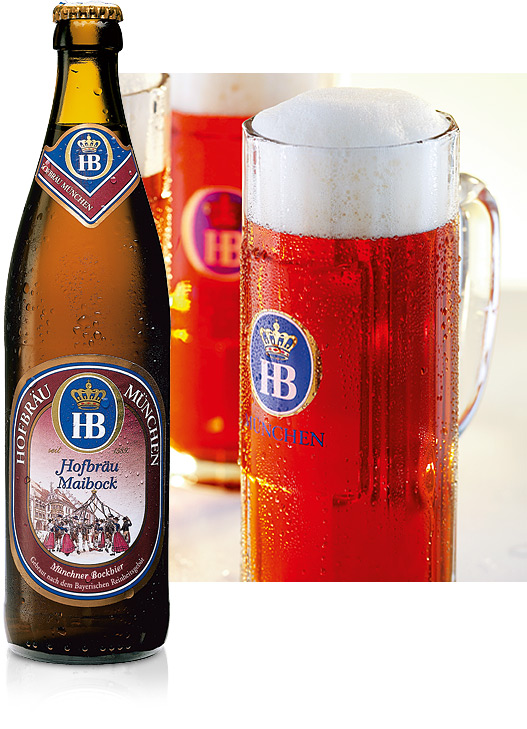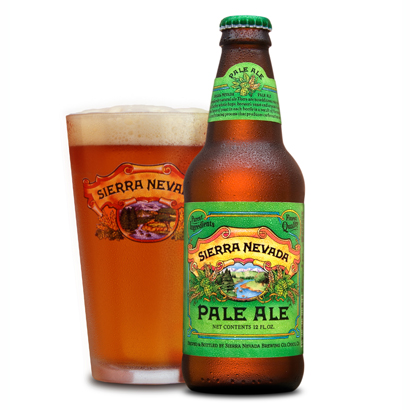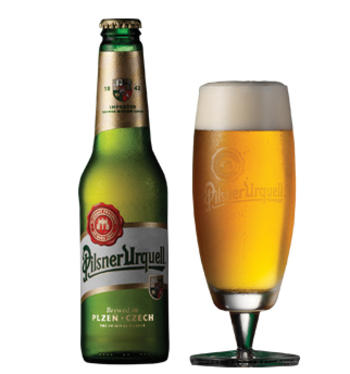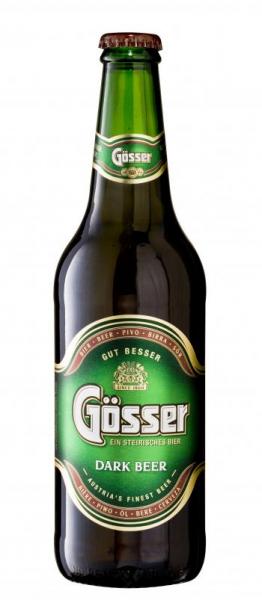Altbier
The name Altbier means “Old Beer” and is a German top fermented beer. Dusseldorf is known for brewing classic examples of this style.
The most common examples of Altbier range from bronze to deep copper and are typically fermented at ale temperatures and then conditioned at lager temperatures. This provides the beer with a rich maltiness with a clean crisp palate.
IBUs: 35-50
SRM: 13-17
OG: 1.046-1.054
FG: 1.010-1.015
ABV: 4.5-5.2
Barleywine
English Barley Wine
The term Barley Wine refers to the strength of the beer being similar to that of a wine and of course beer being made from barley. Traditionally Barley Wine originated in England and has a rich and robust malty flavour and alcohol content over or around 10% ABV. In relation to the malt in the beer there is often very low bitterness or hop aroma and the character leans toward treacle, dark stone fruits and sherry notes.
American Barley Wine
American versions of Barley Wine are notably bitter and often have a typical US hop aroma provided of course by US ingredients. The alcohol content of the American incarnations are often higher than the British counterparts.
Belgian and French Ales
Biere De Garde
Biere De Garde is a style of beer that originated in Northern France, the name translates to “Beer for Keeping” or “Beer that is lagered” and is named so because of the way it is brewed, whereby it is made in the cooler months to be stored until it was needed to quench a thirst when it got warmer. Brewing during the winter was also more beneficial than in the summer as beer brewed at warmer temperatures often resulted in unpredictable quality especially with wild yeast activity being more likely to spoil the beer.
Biere De Garde is an old style of beer that you would call a Farmhouse beer, relating to where it was brewed. It was not necessarily made by commercial breweries and remained a farmhouse industry and the industrialisation of brewing almost made the style extinct. It has luckily however become more popular in recent years.
Biere De Garde is a malt accentuated beer and can vary in colour from blonde to amber to brown, most commonly there should be light body and not too much hop bitterness and next to no hop flavour.
IBUs: 18 – 28
SRM: 6 – 19
OG: 1.060 – 1.080
FG: 1.008 – 1.016
ABV: 6 – 8.5%
Saison
Saison is another historical Farmhouse beer or one where the prime intention is to provide the farm workers in Wallonia, Belgium with a quenching ale at the end of the day. Saison was originally a seasonal beer brewed in the cooler months for storage until the warmer months.
Saisons are most often a bronze colour but can range from straw to deep amber, some darker versions are rarer. A typical ABV is in the range of 6.5% but also as low as 5% and up to 9.5%. Often fruitiness and spiciness dominate and Saison is a great example of a beer that uses spices without throwing balance out of the window. Hop bitterness can be moderate to high and hop aroma is usually low to moderate. Yeast is important in brewing a Saison and the beer strain attenuates highly giving a dry finish.
IBUs: 20 – 35
SRM: 5 – 14
OG: 1.048 – 1.065
FG: 1.002 – 1.012
ABV: 5 – 7%
Witbier
The term Witbier simply mean “White Beer” and the appearance has a certain degree of milky whiteness to it. Most examples are typically somewhere between very pale straw to gold with an opaque cloudiness that gives it a white appearance. Witbier is a 400 year old style of beer descending from gruit ales which use a blend of herbs or spices instead of hops. Today hops are present and still some of the herbs and spices remain.
Witbier is a style that shows the use of spices or herbs in a beer doesn’t have to overpower the malt and hops. Spices like coriander and Orange peel are common as well as cinnamon, grains of paradise and cumin. Hop bitterness is low and aroma may be spicy or earthy and typically noble hop varieties. 50% unmalted wheat is used in most typical examples with pale malt making up the rest, this provides a smooth, silky mouthfeel.
IBUs: 10 – 20
SRM: 2 – 4
OG: 1.044 – 1.052
FG: 1.008 – 1.012
ABV: 4.5 – 5.5%
Berliner Weisse
As you could probably guess Berliner Weisse is a beer most closely associated with the northern part of Germany and Berlin in particular.
It is best described as a sour or tart, low alcohol wheat beer. Historically it was one of the most popular styles of beer brewed in Berlin but that is no longer the case with true Berliner Weisse (the name is protected by law meaning only those made in Berlin are true Berliner Weisse) a lot harder to come by.
The appearance is most usually very pale to light straw coloured, and the predominant character is the tart acidicness that is produced by adding Lactobacillus to the fermentation. The alcohol content is usually around 3% ABV.
The grain bill should have around 50% or more wheat along with Pilsner malt and hop bitterness and aroma are usually very low.
IBUs: 3 – 8
SRM: 2 – 3
OG: 1.028 – 1.032
FG: 1.003 – 1.006
ABV: 2.8 – 3.8%
English Bitter
Bitter is the term given to British ales and is more of a catch all than a defined style and is one of the reasons I don’t like styles. It is the most popular of all ales sold in Britain today. The most notable characteristics are the colour is between straw and amber, too dark and you are going to brown ale territory. Bitters are lightly to moderately hop accentuated and most often are English hop varieties although that is beginning to change.
British bitters can vary widely and so the category has been broken up into subcategories, the ones listed below are most commonly what you will find
Best Bitter
Most examples of best bitters range between gold to deep copper in appearance, malt is on the palate and fruity esters are typical for the style. Most grain bills include a Pale malt such as Maris Otter and crystal malt of some sort to round the beer out. Hop bitterness is usually high and aroma is moderate and typically English varieties of hops such as East Kent Goldings and Fuggles. Most examples are cask conditioned and served with low carbonation and very fresh often only a few weeks old.
IBUs: 25 – 40
SRM: 5 -16
OG: 1.040 – 1.048
FG: 1.008 – 1.012
ABV: 3.8 – 4.6%
Extra Special Bitter
The Extra Special Bitter or ESB as it is commonly known is a bigger, maltier, hoppier version of the best bitter and is not as common as it typically was in the UK. Fullers ESB is synonymous with the style and displays the typical characteristics of the style.
Fruity notes from the extra malt and yeast esters are apparent and a good balance is still required between malt and hops, floral, earthy English varieties of hops are the norm and strength ranges up to around 6.5% ABV
IBUs: 30 – 50
SRM: 6 – 18
OG: 1.048 – 1.060
FG: 1.010 – 1.016
ABV: 4.6 – 6.2%
Blonde Ale
Kolsch
Kolsch is a style of beer brewed in Cologne and is a local speciality beer that is protected by the Kolsch Konvention an association of brewers in the Cologne region.
As for the beer itself, it is easiest to describe it as a beer very similar (not the same) in taste and appearance to a traditional Pilsner except it differs in the fact it is dosed with top fermenting yeast making it an ale. It’s use of traditional German hops and pilsner malt leave it clean and refreshing but not massively full of flavour.
Kolsch is a very pale gold ale with delicate flavour, the merest hint of fruitiness and a clean refreshing palate, hop bitterness is moderate and aroma is low.
IBUs: 20 – 30
SRM: 3.5 – 5
OG: 1.044 – 1.050
FG: 1.007 – 1.011
ABV: 4.4 – 5.2%
Cream Ale
The beer designated “Cream Ale” came about when brewers in Northwest America brewed a lager style beer with ale yeast wanting to compete with the popular US lagers, the result is a style of beer of its own.
The best way to describe Cream Ale is as a thirst quencher,a popular term in the US is a lawnmower beer. Usual examples are Pale gold to straw coloured, low to moderately bitter and next to no hop aroma and often a corn like quality. The ideal quality of a Cream Ale is to quench a thirst on a warm day or as a session beer
IBUs: 15 – 2 0
SRM: 2.5 – 5
OG: 1.042 – 1.055
FG: 1.006 – 1.012
ABV: 4.2 – 5.6%
Brown Ale
English Brown Ale
At certain points in time the Brown ale was a very popular beer in Britain, it is of course named for it’s colour and another characteristic is they are fairly sweet. The English Brown ale has largely fallen from grace with the trend being toward pale beers or more bitter amber coloured bitters.
Brown ales are named for their colour but can range up to very dark mahogany coloured beers, the aroma is malty sweet and the hop bitterness is very low as well as next to no hop aroma. The flavour is toffee and malt sweetness that gives the beer a full body, alcohol content is at the lower end. Manns Brown Ale is a good example.
IBUs: 12 – 20
SRM: 19 – 35
OG: 1.033 – 1.042
FG: 1.011 – 1.014
ABV: 2.8 – 4.1%
American Brown Ale
The American Brown ale originates from brewers attempts to recreate traditional English Brown Ales with an American style of bold flavours and hoppiness. The US brown ale is dryer and more hop forward than the traditional English Brown Ale and also has a high gravity than the English style.
The US Brown ale is malty and has the same caramel quality as the English incarnation but with a more noticeable hop presence and less of the sweetness. Colour is light to dark brown.
IBUs: 20 – 40
SRM: 18 – 35
OG: 1.045 – 1.060
FG: 1.010 – 1.016
ABV: 4.3 – 6.2%
Helles
Helles is a style of beer that comes from Germany and the word Helles loosely translates as “light”. This name relates to the colour of the beer rather than the body or calories in it. Helles (pronounced “Hell-us”) is a basic everyday German lager. Helles came about from a fear among German brewers in Munich that the increasingly popular Pilsner beer brewed in Bohemia would gain more headway in Germany.
The Helles style is most commonly between 4.7% and 5.4% alcohol by volume and is of course a pale golden or straw coloured lager. The hop bitterness is very low in particular because of the high carbonate water in Munich creating harsh bitterness with the hops. This makes helles a subtle malty lager in comparison to a beer like Pilsner. Hop aroma is often moderate and is almost always a German noble hop variety.
IBUs: 16 – 22
SRM: 3 – 5
OG: 1.045 – 1.051
FG: 1.005 – 1.012
ABV: 4.7 – 5.4%
India Pale Ale
IPA or India Pale Ale has it’s origins in the UK as a style of beer that was able to withstand the conditions it was subjected to on board a ship to India. The early India Pale Ales were highly hopped pale ales that were brewed at the time. The extra bittering units from using more hops gave the beer qualities making it less prone to spoil.
IPA has evolved to incorporate a variety of styles, typically they are English IPA’s, American IPA’s and Double IPA’s
English IPA
There are many beers brewed commercially in the UK that have the term IPA on the product that are in fact not much more than ordinary bitters. The are a growing number of brewers making IPA that more accurately reflect the original beer.
The primary goal of an IPA is higher bitterness, higher ABV and more maltiness than an ordinary pale ale, Meantime Brewings India Pale Ale is a good example of an authentic English IPA using English hops and malt. Many IPA’s brewed in the UK make use of more citrus or aromatic American hops and this is where the line blurs between UK and US versions of the IPA.
Overall the English IPA should have pronounced bitterness and aroma with dry hopping playing a part with UK hop varieties, a colour somewhere between light amber and copper and a medium to dry mouthfeel and generally slightly more subtle than the american counterpart.
IBUs: 40 – 60
SRM: 8 – 14
OG: 1.050 – 1.075
FG: 1.010 – 1.018
ABV: 5 – 7.5%
American IPA
The American IPA is clearly the same as the English version predominantly using US ingredients. In many ways it is truer to the historical original than many English IPA’s but more free range has taken hold with bolder flavours and bigger grain bills bumping up the alcohol content.
The key qualities of the American IPA are an intense hop aroma and bitterness, again dry hopping is almost always the par for this style. Big citrus hops are the most frequently used varieties and lots of them. The hops are the main drive here maltiness is subtle as are fruit notes from esters. Colour is somewhere between golden and reddish copper.
IBUs: 40 – 70
SRM: 6 – 15
OG: 1.056 – 1.075
FG: 1.010 – 1.018
ABV: 5.5 – 7.5%
Double IPA / Imperial IPA
The double or imperial IPA is a result of US craft brewers pushing the boundaries of the IPA style and going bigger and bolder. The Double IPA is a higher alcohol by volume and more intensely hopped version of the US IPA. Reaching 10% ABV or more the bittering units needed to balance the malt are higher however with more grain the style shouldn’t be overly malty all the flavour should be from aroma hops and dry hopping.
IBUs: 60 – 120
SRM: 8 – 15
OG: 1.070 – 1.090
FG: 1.010 – 1.020
ABV: 7.5 – 10%
Lambic
Lambic is a very old style of beer traditionally brewed in Belgium and one of the more curious styles of beer available anywhere in the world. Unlike any other beer brewed commercially Lambics and Sour ales are fermented spontaneously, i.e. they are not dosed with a brewers strain of yeast. The spontaneous fermentation introduces other bacteria that consume much more of the sugars in the beer leaving in some cases an extremely tart beer.
Lambic are brewed with aged hops to have lost most of their bitterness to avoid competing with the sourness, they are left to the open air to be inoculated with wild yeast and aged in oak barrels for a year or more before bottling. All this makes them truly unique.
Lambics can be split into various sub catagories, we have:
Straight Lambic
This is lambic from a single batch and not blended with other aged or newer batches. Served with no carbonation and displaying a true version of the breweries wild yeast character.
IBUs: 0 – 10
SRM: 3 – 7
OG: 1.040 – 1.054
FG: 1.001 – 1.010
ABV: 5 – 6.5%
Gueuze
Gueuze is a blend of young (up to a year) and 2 and 3 year old batches. This blend gives the beer the complexity of the aged beer with the bouquet of the younger beers. The Gueuze is bottled and the remaining fermentables in the younger beer ferment in the bottle and lightly carbonate the beer.
IBUs: 0 – 10
SRM: 3 – 7
OG: 1.040 – 1.060
FG: 1.000 – 1.006
ABV: 5 – 8%
Fruit Lambic
This style of beer can either be unblended lambic or a Gueuze style of beer with the addition of fruit to the aging vessel (barrel) the wild yeasts consume the sugar in the fruit and the flavour qualities remain. Many commercial beers of this style use sugars or syrups to add the fruit character and sweeten the beer but are not considered traditional.
IBUs: 0 – 10
SRM: 3 – 7
OG: 1.040 – 1.060
FG: 1.000 – 1.010
ABV: 5 – 7%
Maibock
Maibock is a strong lager originally brewed in Bavaria or Germany, the name bock is supposedly derived from the town Einbeck. Maibock is a seasonal beer made for the spring and early summer (the Mai of the name indicting the month of May) of around 6.5% ABV
Maibock is traditionally a little darker than Helles but is still a pale lager, the higher alcohol content and moderate bittering units for the gravity means it’s a fairly malty beer but still crisp and clean.
IBUs: 23 – 35
SRM: 6 – 11
OG: 1.064 – 1.072
FG: 1.011 – 1.018
ABV: 6.3 – 7.4%
Mild
Once one of the biggest selling beers in Britain especially among manual labourers, unfortunately the style nearly became extinct. Fortunately Mild is undergoing a bit of a resurgence and an interpretation recently crowned champion beer of Britain by CAMRA. Mild is most often a dark brown (although bronze versions are available), slightly sweet beer with the merest whiff of hops with no big, bold flavours and low alcohol content meant it could be and was drunk in vast amounts. The popularity of dark beers however saw sales of Mild decrease.
Originally Mild was a term to describe young beer, now however it is almost always associated with mahogany or dark brown beers, the palate is sweet and malty with stone fruit notes. Low bitterness and next to no aroma hops make it a simple drink that won’t offend.
IBUs: 10 – 25
SRM: 12 – 25
OG: 1.030 – 1.038
FG: 1.008 – 1.013
ABV: 2.8 – 4.5%
American Pale Ale
American Pale Ale could be considered the equivalent to an English Bitter, Pale ale is the go to style of beer and is most often the first beer brewed by any commercial brewery. Whilst pretty much every country in the world has a pale ale, i.e a beer made predominantly with Pale Ale malt, the American Pale Ale with its use of big American varieties of hops stands out in its own right.
Sierra Nevada Pale Ale is perhaps the beer that is most synonymous with the style, typical interpretations of pale ale are pale gold to amber, anything too dark would become an American Brown ale.
Hop bitterness is medium to high and aroma is high in most cases with a lot of breweries opting for varieties like Cascade, Centennial or Colombus. Yeast character is often cleaning letting the hops and malt shine on their own and mouthfeel is medium with moderate to high carbonation.
IBUs: 30 – 45
SRM: 5 – 14
OG: 1.045 – 1.060
FG: 1.010 – 1.015
ABV: 4.5 – 6.2%
Pilsner
The first and original Pilsner brewed was in Pilsen by Bavarian brewer Josef Groll copying techniques of storing beer in caves where the cold temperatures would effectively lager the beer and improve clarity, storage and ultimately the palate.
A combination of new malting technology that produced lighter malt, very soft water and noble hop varieties like Saaz add up to a beer that would be emulated all over the world but not quite like the original.
Crisp, a fine balance between malt and spicy noble hops are the qualities that are required for a Pilsner. Hop bitterness is fairly high and aroma is a pronounced spiciness, soft water is required to recreate the style and combat harshness from the hop bittering levels. Decoction mashes are traditional and accentuate the malty quality of the beer. Mouthfeel is smooth and silky with a crisp palate.
IBUs: 35 – 45
SRM: 3. 5- 6
OG: 1.044 – 1.056
FG: 1.013 – 1.017
ABV: 4.2 – 5.4%
Scotch Ale
The Scottish equivalent of the Pale ale or bitter is the Scotch ale. The Scotch Ale is a strong version of a pale ale but the style also includes beers that range up from low gravities to higher gravities, the strongest of which is known as a wee heavy. This range of beers were referred to by how many shillings they cost per hogshead (54 imperial gallons)
All of the Scotch Ales whatever their denomination whether it be a light 60/-, Stronger 80/- or a Wee Heavy share certain characteristics. These being that they all have low hopping rates because hops historically they would have to be transported all the way from Southern England, the beers would be fermented at moderately low temperatures giving them all a cleaner less ester filled palate and they are all malt pronounced beers with more caramel notes than hoppy or bitter qualities
Scotch Strong Ale / Wee Heavy
Ranging from 6.5% ABV upto 10% ABV are usually full of complex malty flavours and are rich drinks that have a fair amount of sweetness. The mouthfeel and body is full and viscous with the higher gravity beers tending to be more so. The hop bitterness is just enough so the beer is cloying but otherwise low and the aroma hops are usually low too.
IBUs: 17 – 35
SRM: 14 – 25
OG: 1.070 – 1.130
FG: 1.018 – 1.056
ABV: 6.5 – 10%
Stout
A beer style that is known for it’s often black appearance and thick fluffy head. Stout is a beer style that grew up alongside Porter, malting technology creating darkly roasted and black malts. The term Stout was used after “Stout Porter” or strong porter eventually it became just Stout and this was the Name used by Guinness in Ireland who started making it.
There are various incarnations of Stouts, there Dry Stout, Milk Stout and Imperial Stout amongst others but the share the same characteristics of all being very dark brown to black beers, smooth often creamy in body and full of roasted, bitter qualities.
Dry Stout
The most famous Dry Stout in the world also happens to be the one everybody knows, Guinness. Dry Stouts are usually jet black or at least very deep, dark brown. The flavour is roasted grain, toast, and coffee bitterness. Hop bitterness is moderate to high and aroma is typically low. Roasted barley is usually in the grain bill and chocolate malt may also be used. ABV is in the 4 – 5% range, stronger and it is known as an export Stout.
IBUs: 30 – 45
SRM: 25 – 40
OG: 1.036 – 1.050
FG: 1.007 – 1.011
ABV: 4 – 5%
Milk Stout
A Milk Stout or Sweet Stout share most of the characteristics of a dry stout with one notable difference being a residual sweetness from unfermentable sugars. This sweetness completely changes the character of the beer and offsets the bitter roast character of the stout nicely.
The sweetness is usually provided by the addition of lactose sugar that cannot be consumed by the yeast so remains in the beer after fermentation. This lactose sugar is why the beer may be referred it as a Milk Stout. Hop bitterness is also typically lower than in a Dry Stout.
IBUs: 20 – 40
SRM: 30 – 40
OG: 1.044 – 1.060
FG: 1.012 – 1.024
ABV: 4 – 6%
Imperial Russian Stout
This style of Stout was originally brewed for export to Russia and was the original Imperial beer coming in on average around 8 – 12%. Brewed to a high gravity and with extra bittering hops to withstand the conditions of export this beer is as rich, dark and complex as a beer comes.
The complexity of such a high gravity beer with the added layer of dark malts make the Imperial Russian Stout one of the most intense style available and fortunately it is undergoing somewhat of a renaissance with craft breweries in Europe and America.
Hop bitterness is increased to balance out the larger malt bill, also many beers make more use of flavour hops. Large amounts of dark fruit flavours are present with a higher finishing gravity adding some sweetness. Many Imperial Stouts are full bodied to the point of being noticeably viscous, they should not however be syrupy.
IBUs: 50 – 90
SRM: 30 – 40
OG: 1.075 – 1.115
FG: 1.018 – 1.030
ABV: 8 – 12%
Porter
A beer originating in London, Porter was a style that was born from a blend of beers in the 18th century called three threads, eventually a beer brewed that recreated the blend of beers and this became known as Porter. The name porter is supposedly derived from the popularity of the beer with the porters who worked in London.
Porter as a style of beer has a few variations so they can range in alcohol content from between 4% to 9.5% but all of them share a colour somewhere between Deep brown to near black, with ruby highlights being common because of the use of dark roasted and dark caramel malts.
English Porter
Brewed primarily with British ingredients English Porter or Brown Porter typically is full of caramel and toffee notes and has a hint of sweetness. Hop bitterness is medium and aroma is low or has the earthy character from English hop varieties like East Kent Goldings for example. The body is medium and London water which is fairly hard should be used. ABV is usually in the range of 4 – 6%
IBUs: 18 – 35
SRM: 20 – 30
OG: 1.040 – 1.052
FG: 1.008 – 1.014
ABV: 4 – 5.4%
Robust Porter
Robust Porter differs from an English Porter in that it tends to you more roasted or back malt than the latter and has a little less sweetness and the toffee character. The roast is not the stand out character however as in a Stout. Hops are more potents in the Robust Porter both in terms of bitterness and aroma and American varieties of aroma hops can really have an affect on the character of the beer. Alcohol is also usually higher in the Robust version.
IBUs: 25 – 50
SRM: 22 – 35
OG: 1.048 – 1.065
FG: 1.012 – 1.016
ABV: 4.8 – 6.5%
Imperial Porter
Also known as Baltic Porter this is another example of brewers pushing the envelope on style and resulting in an accepted style of it’s own. The Imperial Porter is bigger and bolder both in terms of alcohol content and also hop especially aroma hops playing a more significant role in overall flavour. The star of the show is the deep, rich maltiness from the dark malts and a deep dark fruit quality. Roastiness should be kept in check when formulating an imperial Porter otherwise it becomes an Imperial Stout.
IBUs: 20 – 40
SRM: 3. 5- 6
OG: 1.060 – 1.090
FG: 1.016 – 1.024
ABV: 5.5 – 9.5%
Vienna Lager
This lager named of course after the city it was first brewed, Vienna in Austria. Unfortunately the style is not as popular where it originated and the beer is now easier to find in Mexico. Vienna lager is also known as Amber Lager and was first brewed by Anton Dreher in Vienna in 1841, the reason it is now a popular beer in Mexico is because many brewers emigrated to the country from Austria taking the style with them.
Vienna Lager is a copper brown to reddish amber beer with a balanced malt palate. Hop bitterness is moderate to balance out the malt and a slight sweetness may be detected. The best adjective to describe this beer is smooth and a crisp finish. The majority of the malt bill is Vienna malt which provides more complexity than lager malt, noble hops provide the moderate bitterness and aroma.
IBUs: 18 – 30
SRM: 10 – 16
OG: 1.046 – 1.052
FG: 1.010 – 1.014
ABV: 4.5 – 5.5%

